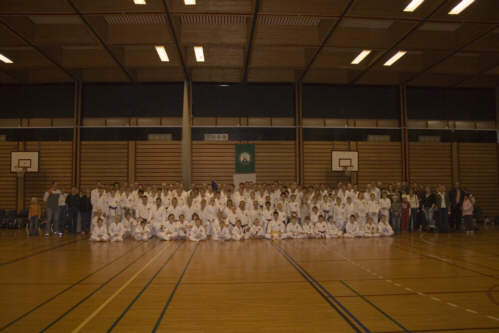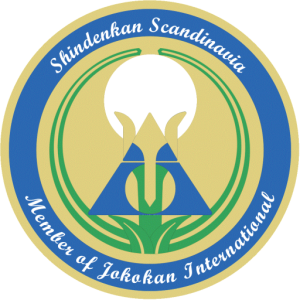
By Jokokan Honbu
With 125 registered participants and over 60 spectators during the training camp, this was the largest Jokokan Honbu-dojo curriculum training camp to date. In the usual high tempo, but good atmosphere, the training camp was conducted first with Ukemi (fall technique) in three main groups and on six mat areas, followed by a relevant division into four main groups, which were distributed over two halls.
Each main group was assigned an instructor team with a fixed task. Selected parts of the curriculum were taught for all grades, so that everyone was challenged, but also gained the realization that "everyone can do much more than they tell themselves". Both kihon, kumite and kata were trained - basic technique, organized combat and figure exercises.
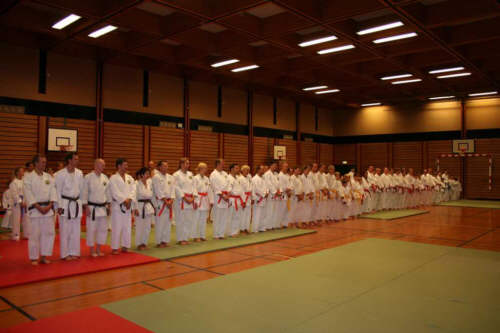
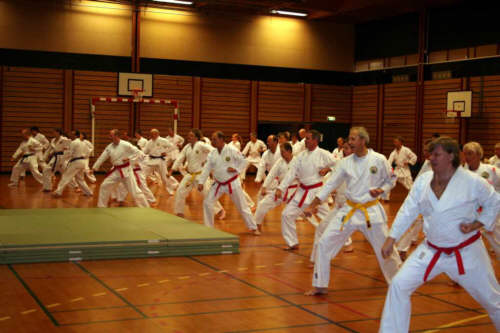
The training camp ended with a graduation session for all pre-set, as well as those who were set during the camp. There is no doubt that this training camp again received very good feedback and scores on all parameters. But many people may not think about how much preparation is behind it.
As you all know, all instructors and contributors in Jokokan contribute and work voluntarily and unpaid, but with a very high morale and motivation to really make a difference for other people, society and ultimately also for themselves through selflessness work that may not always be recognized and rewarded according to merit and the work that actually lies behind it. Therefore, a small description of how a Jokokan training camp is created.
The planning of the training camp begins 1-1½ years before, with Kimu Sensei planning all the Jokokan's activities for the following year and making sure that all these activities also have a room to take place in. This "solitaire" is then approved by the Federation Board and the Honbu-dojo .
Approx. 2 months before the training camp, Kimu Sensei starts the fine planning for the training camp and its execution down to the last detail. This also includes an analysis of which things could be done better, based on the performance of the last training camp and feedbacks, so that continuous quality improvement and optimization takes place.
This is communicated to the entire instructor group 2-4 weeks before the training camp takes place. Approx. 8 weeks before the training camp takes place, the camp committee chairman issues a pre-invitation to all schools, which is followed up approx. 2-3 weeks later of the real invitation with registration.
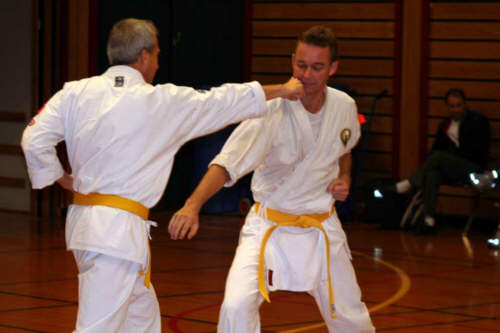
There is ongoing update and voting communication between Kimu Sensei and the Camp Committee Chairman, so everything is heading in the right direction.
Each school principal and his instructors have a responsibility to tell honestly about the benefits of participating in the training camps and to get as many of their school's students to these camps so that the school's students can reap the benefits.
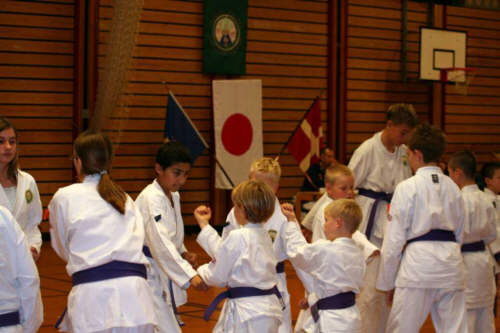
When the Camp Committee Chairman has received all entries and divided them into categories given by Kimu Sensei, he sends these to Kimu Sensei and the camp treasurer. The camp treasurer then starts following up on correct and timely payments. While Kimu Sensei starts with the very last fine planning, including dividing into correct participant teams and instructor teams, theme and training content, how the line and execution should take place, etc. Nothing is left to chance. This is communicated to all instructor teams 2-4 days before the end of the camp.
40-60 minutes before the end of the training camp, an instructor team meeting is held, where Kimu Sensei briefs all the instructor teams about the line at the camp and how the instructors must deal with different situations, from happy to catastrophic situations. There will always be back-up plans involved.
After the completion of the camp, information and feedback is collected from all participants, so that this feedback can be used constructively for the next camp – the eternal spiral of improvement.
